- Learning time
- 20 minutes
- First play time
- 45 minutes
Kimono
Designed by: Hisashi Hayashi
In Kimono (also available as Zooscape) several cards are laid up on the table and one player (the Master in Kimono; we haven’t played the Zooscape version) chooses where to split the cards – without changing the order! – into two groups. Every player (including the Master) now secretly chooses the group of cards they’d like, using one of two bidding tiles.
All tiles are revealed simultaneously. If you’re the only player to choose a group, you get to take all of the cards into a growing tableau on the table – these will score at the end of the game. Any group that was chosen by more than one player will be split into two smaller groups, and everyone who bid on that group initially repeats the process, before the other group is resolved in the same way.
Any player who got no cards at all in a round takes a Kimono card, which is worth five points.
That much is simple, but the complexity in play here is how the cards score – most have a number value (number of points) but there are also ribbons on the card that denote how many of that number you can safely collect. If you end up with more than you should have, then they no longer score you points at all, but each card is now minus one point at the end of the game!
Add in some special cards that can be helpful or unhelpful, a way of adding any unclaimed cards to your hand, and how the (obtainable) key role of Master affects things, and Kimono is a far more intricate game than it first appears.
The guru's verdict
-
Take That!
Take That!
A fair bit. The Master can certainly split the groups in a way that can appall the other players.
-
Fidget Factor!
Fidget Factor!
Moderate to high. Every decision is key, and watching what both you and your competitors need should be factored in. Perhaps the game is best played with three.
-
Brain Burn!
Brain Burn!
The rules are pretty much (some special cards aside and how the Master changes hands) all explained on this page, but the decisions are tricky, as even one play will prove.
-
Again Again!
Again Again!
The I-Cut-You-Choose aspect of Kimono means the players themselves always bring something to the table, but ultimately there's not an enormous amount of variety here.

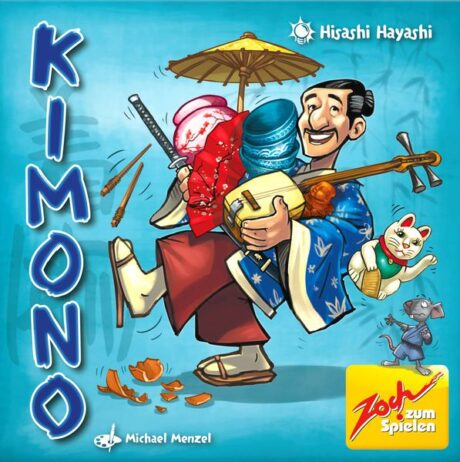
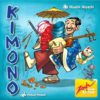


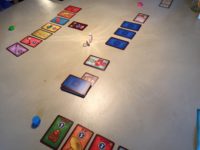
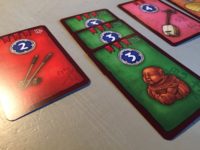





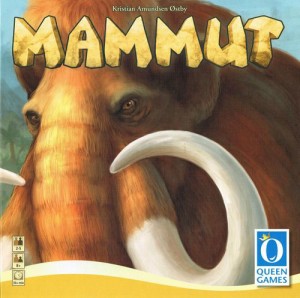
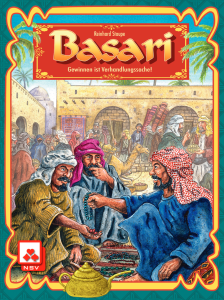
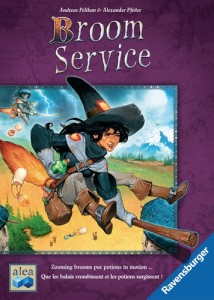
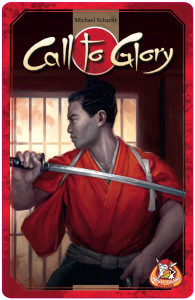
Sam says
Only two plays for me so far, but Kimono feels like one of those games where the cleverness of the design isn't matched by the actual fun of play. Maybe because it looks so vibrant, I expected a different, lighter experience, but most of the game feels like down-time as you wait for the Master to divide the cards, or wait for someone to choose their bidding tile, or try and work out those complexities yourself. The end result felt over-complicated and over-long: a strange mix of table-reading and with four or five players, blind luck. Although it's less intricate (and to be honest, the I-Cut-You-Choose mechanic isn't a favourite of mine) I much preferred Animals on Board to this.